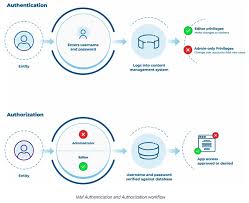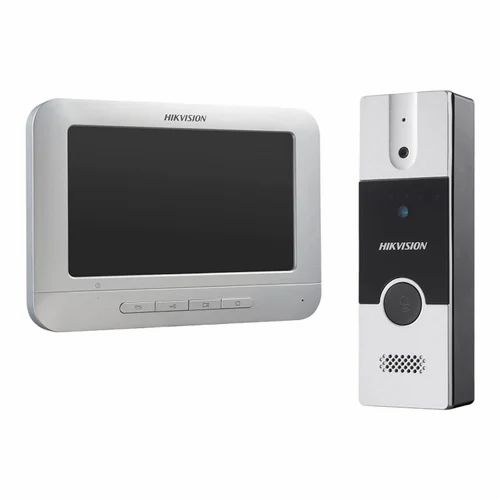Access Management System: Enhancing Security and Efficiency
Access management systems play a crucial role in modern security solutions, offering a comprehensive approach to controlling and monitoring access to physical spaces. These systems are designed to enhance security, streamline operations, and provide organizations with greater control over who can enter specific areas within their premises.
One of the key features of an access management system is the ability to restrict access based on predefined permissions. By assigning unique credentials to individuals, such as keycards, PIN codes, or biometric data, organizations can ensure that only authorized personnel are able to enter restricted areas. This not only helps prevent unauthorized entry but also enables organizations to track and monitor access activities in real-time.
Access management systems offer a range of benefits for businesses across various industries. In addition to enhancing security by preventing unauthorized access, these systems can also improve operational efficiency. By automating the process of granting or revoking access rights, organizations can reduce the administrative burden associated with managing physical keys or manual access control lists.
Furthermore, access management systems provide valuable insights into access patterns and trends within an organization. By generating detailed reports on access activities, organizations can identify potential security risks, optimize resource allocation, and improve overall security protocols.
In today’s fast-paced and interconnected world, the need for robust access management solutions has never been greater. With threats to physical security evolving constantly, organizations must invest in advanced technologies that offer reliable protection against unauthorized entry.
Whether it’s securing sensitive areas within a corporate office building or managing access to high-security facilities such as data centers or research labs, an effective access management system is essential for maintaining a safe and secure environment for employees, visitors, and assets.
In conclusion, access management systems are indispensable tools for enhancing security and efficiency in modern workplaces. By implementing robust access control measures and leveraging cutting-edge technologies, organizations can proactively address security challenges and safeguard their most valuable assets.
Understanding Access Management Systems: Key Questions and Insights for Businesses
- What is an access management system?
- How does an access management system work?
- What are the key features of an access management system?
- Why is access management important for businesses?
- What are the benefits of implementing an access management system?
- How can an organization choose the right access management system for their needs?
- What security measures are typically included in an access management system?
What is an access management system?
An access management system is a comprehensive security solution designed to control and monitor access to physical spaces within an organization. It allows businesses to restrict entry to specific areas based on predefined permissions assigned to individuals through various credentials such as keycards, PIN codes, or biometric data. By implementing an access management system, organizations can enhance security by preventing unauthorized access, streamline operations by automating access control processes, and gain valuable insights into access patterns through detailed reporting. Overall, an access management system is a vital tool for ensuring the safety of personnel and assets while optimizing security protocols in today’s dynamic business environment.
How does an access management system work?
Understanding how an access management system works is essential for grasping its significance in modern security solutions. An access management system operates by assigning unique credentials to individuals, such as keycards, PIN codes, or biometric data, which grant them access to specific areas within a premises based on predefined permissions. These permissions are set by administrators and can be easily adjusted as needed. When an individual presents their credential at a designated access point, the system verifies their identity and authorization level before granting or denying entry. By leveraging advanced technologies and real-time monitoring capabilities, access management systems provide organizations with a secure and efficient way to control access to their facilities while maintaining a comprehensive record of access activities.
What are the key features of an access management system?
Key features of an access management system include the ability to control and monitor access to physical spaces through the use of unique credentials such as keycards, PIN codes, or biometric data. These systems enable organizations to set permissions for individuals, restrict access to specific areas, and track access activities in real-time. Additionally, access management systems offer automation capabilities for granting or revoking access rights, enhancing operational efficiency and reducing administrative burdens. Detailed reporting functionalities provide valuable insights into access patterns and trends, allowing organizations to optimize security protocols and mitigate potential risks effectively.
Why is access management important for businesses?
Access management is crucial for businesses as it ensures the security and integrity of their premises, assets, and sensitive information. By implementing effective access control measures, organizations can prevent unauthorized individuals from entering restricted areas, thereby reducing the risk of theft, vandalism, or data breaches. Moreover, access management helps businesses comply with regulatory requirements and industry standards related to security and privacy. By controlling who has access to specific areas or resources within the organization, businesses can mitigate potential security threats and maintain a safe environment for employees, customers, and visitors.
What are the benefits of implementing an access management system?
Implementing an access management system offers a multitude of benefits for organizations seeking to enhance their security measures. One key advantage is the ability to control and monitor access to restricted areas, ensuring that only authorized individuals can enter. This helps prevent unauthorized entry, reduces the risk of security breaches, and enhances overall safety within the premises. Additionally, access management systems streamline the process of granting and revoking access rights, eliminating the need for traditional keys and manual access control lists. By automating these tasks, organizations can improve operational efficiency, reduce administrative burdens, and enhance productivity. Furthermore, access management systems provide valuable insights through detailed access activity reports, enabling organizations to identify security vulnerabilities, optimize resource allocation, and strengthen their overall security posture.
How can an organization choose the right access management system for their needs?
Choosing the right access management system for an organization’s needs requires careful consideration of several key factors. Firstly, organizations should assess their specific security requirements and objectives to determine the level of access control and monitoring needed. It is essential to evaluate the scalability of the system to ensure it can accommodate future growth and evolving security needs. Additionally, compatibility with existing infrastructure, ease of integration with other security systems, user-friendliness, and compliance with industry standards are crucial considerations. Conducting thorough research, seeking recommendations from trusted sources, and engaging with reputable vendors can help organizations make an informed decision when selecting an access management system that aligns with their unique requirements.
What security measures are typically included in an access management system?
Access management systems incorporate a variety of security measures to ensure the protection of physical spaces and assets. Some common security features found in these systems include authentication mechanisms such as keycards, PIN codes, biometric scans (fingerprint, iris, facial recognition), and two-factor authentication for enhanced security. Additionally, access management systems often include audit trails and logging capabilities to track access activities in real-time, enabling organizations to monitor and analyze access patterns for potential security threats. Encryption protocols are also commonly employed to secure data transmission between access control devices and central management servers, safeguarding sensitive information from unauthorized interception.


